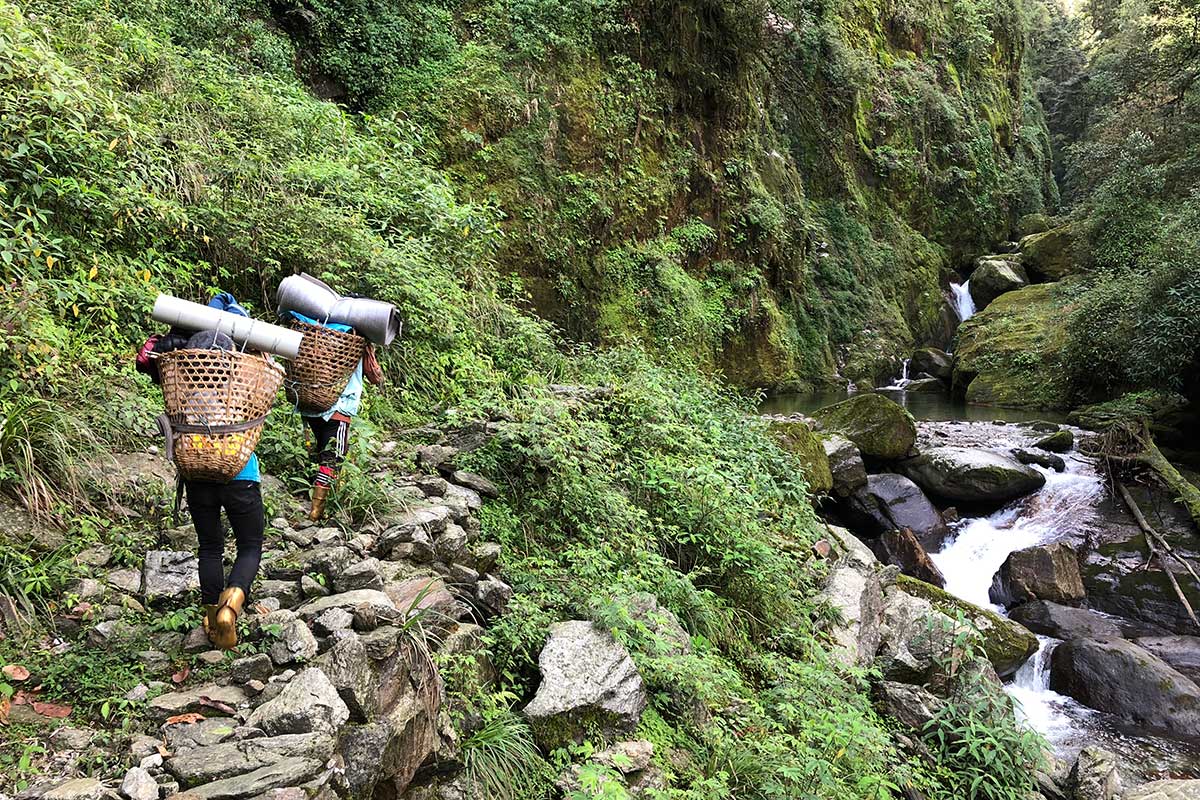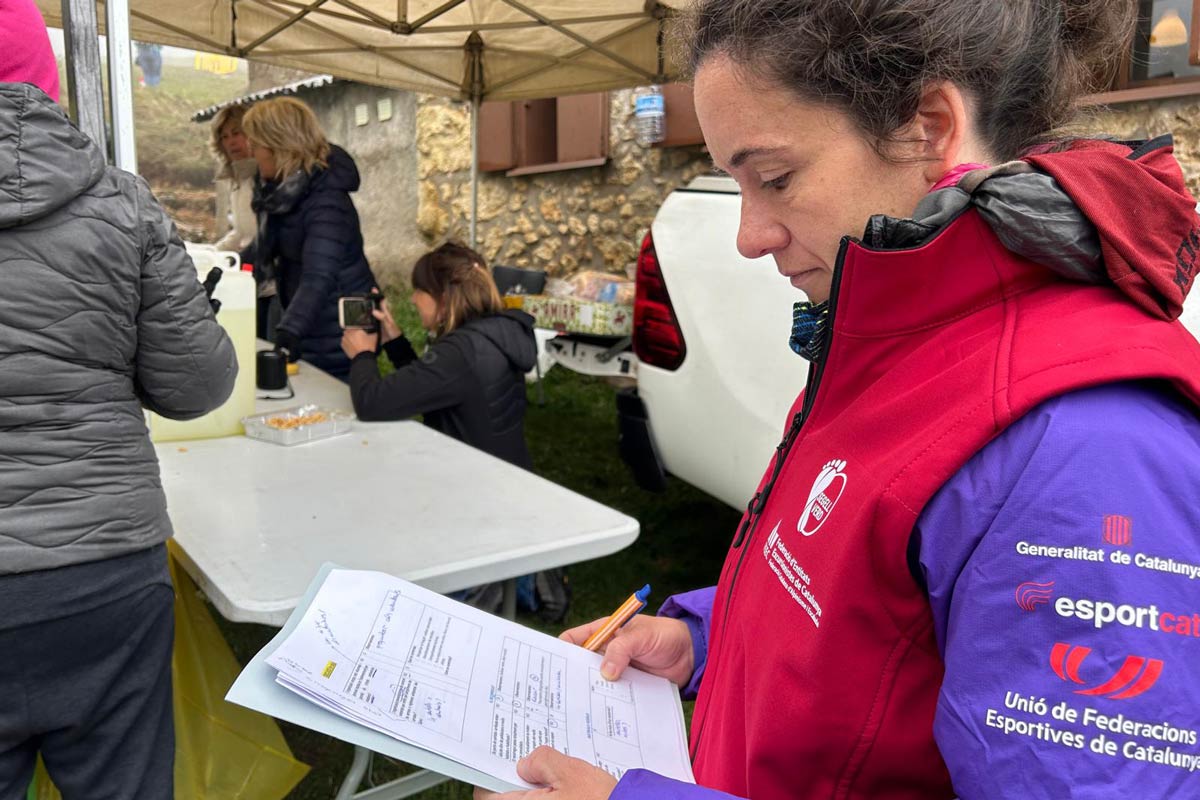2018 Nominee
PROJECT INFORMATION
NEW ENTRY
Project Status: Conception 2010, Realisation 2015, Ongoing
Location: Kathmandu, Nepal
Contact: Nawang Singh Gurung
Email – Facebook #1 – Facebook #2
GOALS AND OBJECTIVES
The goal of the Barun Bachaon (“Save the Barun”) project is to build an ecosystem and bolster community resilience in Nepal’s Barun Valley. This valley features the most pristine ecosystem in the whole Himalaya, extending from the arctic-like triple-summit massif (Everest, Lhotse and Makalu) down through alpine, temperate, and subtropical ecologies into biological tropics. The Barun Bachaon Local Coordinating Committee unites village leaders, conservation experts, and National Park officials to promote mountain protection in an area that is home to Earth’s highest peaks and high-adventure destinations.
Barun Bachaon builds on conservation momentum dating back to 1983, when a partnership of international conservationists and local communities was forged to protect the precious ecological area now known as the Makalu-Barun National Park (MBNP) and Conservation Area. The MBNP, in its flora, is home to forty-seven types of orchids, twenty-five varieties of rhododendron, fifteen types of oak trees and forty-eight species of primrose, to mention just a few. The park preserves habitat for the Himalayan black bear, the red panda, wild boar, three species of mountain goats, the languor monkey, and all three of the world’s leopards (spotted, clouded, and snow). Its Arun River is home to eighty-four types of fish and more than four hundred bird species have been sighted in the area.
The MBNP was established to protect this region as Asia’s first example of the UNESCO Biosphere reserve model. The National Park spans 1,500 square kilometers. Buffer zones surrounding the park’s pristine ecosystems extend protection to a 2,330 square meter area—zones that are inhabited by 32,000 people of the Sherpa, Bhote, Rai, and Gurung communities, who receive training in community-based natural resource management practices.
The success of this pioneering national park has been continued by the Barun Bachaon team. Today, Barun Bachaon volunteers maintain and strengthen community-based conservation practices in four villages of Nepal’s Sankhuwasabha district surrounding the MBNP. In parallel to conservation, they address community economic, social, and environmental sustainability through community-based training, capacity-building, and development projects.
The villagers of Nepal’s Barun Valley face grave threats – with a massive hydroelectric construction project being funded by India, a major roadway being built through the valley by China, and ecological effects of climate change looming on the horizon. To manage these, the Barun Bachaon Local Coordinating Committee is launching an applied research component as part of the larger Barun Bachaon programme.
The “Barun Biomeridian” research effort will monitor the area’s ecological health and prepare residents for changes to come. This project will achieve the following objectives: 1) Make climate change monitoring relevant and accessible at the local level; 2) Record atmospheric, acoustic, and ecological data to monitor how climate change impacts local biodiversity over time; 3) Equip local communities to understand and use data to plan for adaptation and advocate for mitigation at policy level.
These conservation activities are coupled with a holistic community development approach to empower Barun residents to build a thriving future. As communities improve their quality of life, they become stronger partners in conservation work.
RELATIONSHIP WITH LOCAL COMMUNITIES
The Barun Bachaon project is a project that not only benefits, but is planned and implemented by, local communities. Nepali citizens are organizing this effort in partnership with Nepali organizations, such as the non-governmental organization Share & Care Nepal and the East Foundation. Additional international support comes from Future Generations University, a global research and learning center that has worked in the area since the establishment of the Makalu-Barun National Park. These organizations are working on the ground in four local villages: Shyakshila, Lingam, Mangkhim and Simbung.
Villagers take ownership in the work because their leaders are included in the decision-making process with a seat on the Barun Bachaon Local Coordinating Committee. This committee also organized community engagement workshops to gain input from villagers on how they would like to improve their community. The workshop in March 2018 indicated that villagers were most interested in learning eco-friendly agro-forest and horticulture methods to promote environmental conservation along with income generation.
The project initiated cultivation of cash crops like cardamom, oranges, and fruit-bearing trees. Other training is on the selective foraging of wild medicinal plants. These activities will expand momentum already underway by a cohort of villagers trained to lead positive change in their communities; this work is improving women’s literacy, child health and engaging people in local governance.
Share and Care Nepal, one of the partner organizations leading the Barun Bachaon project, played a central role in providing this empowerment-based training. Over the past five years, six villagers received their nine-month-long Community Development and Management Diplomas. Another ten villagers participated in a 15-day community exposure training to study successful examples of change. More than 70% of these trainees are still reside in their home villages (some have moved to Kathmandu for work). For example, after partnership with government officials, Shyakshila village has vastly improved sanitation now: toilet access for every household and community-wide clean water initiatives.
One woman who graduated from the Diploma training, Yangmu Bhote, is now busy organizing a women’s action group in the village to train women on home-based health and income generation activities. She is also providing “school preparation” courses to village children on a volunteer basis – offering them critical skills for success once they attend formal school programs. Yangmu purposefully incorporates basic hygiene principles into her classroom teaching in order to promote healthy behaviours like washing your hands, brushing your teeth, and using a toilet. Her pupils then demonstrate these practices at home and learning extends to their parents.
Another man who graduated from the Diploma training, Dukpa, is coordinating the development efforts across the four villages. He is the general secretary of the Barun Bachaon Local Coordinating Committee. He also manages volunteer participation in the Biomeridian research. Other graduate participants are helping Dukpa and doing volunteer work for their villages.
COLLABORATION WITH LOCAL AUTHORITIES
In order to ensure strong partnership with governmental officials to implement the Barun Bachaon project, the Local Coordinating Committee includes representatives from the following: Makalu Barun National Park officials, local government officials, local non-government organizations (Share & Care Nepal, The East Foundation) and local Community-based Organizations (e.g., The Youth League). This ensures that decision-making and the larger direction of the project is informed by input of this multi-sectoral group. Additionally, the Barun Biomeridian project received permission from Nepal’s Department of National Park and Wildlife Conservation before commencing its pilot operations.
BEST PRACTICES IN MOUNTAINEERING AND MOUNTAIN-BASED SPORTS
The Barun Bachaon project goes “beyond business as usual” by integrating mountaineering tourism, nature conservation, and community development activities. Other projects “do” these activities—but Barun Bachaon shows best practice due to a high degree of involvement and leadership by these communities who call this international mountaineering destination home.
There is a mutually beneficial process of protecting exceptional ecosystems and simultaneously improving the quality of life of local residents. Empowerment-based training plays a central role in this, equipping communities to improve their standard of living sustainably. They learn to use the resources they already have more efficiently and for new purposes, so they are not driven to ecologically destructive income generating activities out of desperation.
A major component of this project strengthens eco-tourism entrepreneurial activities surrounding the MBNP. One example of this is “Yeti Trail” – a hiking trail to cater to tourists and improve inter-village connectivity in the Barun Valley. It was named the Yeti Trail for the Himalayan black bear which resides in the valley, which local villagers identified—and outside researchers verified—to be commonly mistaken for the mythical beast. (For details, see “Yeti” as described on Wikipedia.)
The Yeti Trail serves as entry point for mountain tourism, for community empowerment through access to education, and for the scientific research (in the Barun Biomeridian effort). Stretching from Shyakshila village (at the junction of the Arun and Barun rivers) to Jhate-Orar (the district’s most marginalized and impoverished village) the trail allows tourists and mountaineers to walk through Nepal’s most pristine jungle. (Previously mountaineering groups to Makalu and Lhotse East Face had to take a circuitous route.) Funds were raised and a partnership was established with the local government for permission to build the trail; local materials were used by villagers to save on expenses and provide gainful employment rather than hiring outside contractors. Along the route, tourism development and economic opportunities activities improve the quality of life for villagers in these remote areas.
To support this, villagers organized a Microcredit initiative that lends funds to aspiring eco-tourism entrepreneurs. This program empowers villagers to launch businesses like home stay services and shops to attract high-adventure tourists interested in local trekking and mountain climbing. On a smaller scale, women also take out micro-loans of Rs. 500 or 1000 to purchase chickens, pigs, or other goods for trading in order to support their families and send their children to school.
OPPORTUNITIES FOR VOLUNTEERS
Barun Bachaon’s goal is to promote environmental stewardship of the Barun Valley by local communities. The strategy used to accomplish this is to equip villagers with the awareness and techniques needed to modify their behaviors toward greater sustainability. In focus groups facilitated by the project team, villagers emphasized that ‘a ray of hope came when our youth and women came back from their training and started talking about development’ – before this, they had no knowledge of proper sanitation, nutrition, or health care, let alone effective income generation strategies or how to adapt farming methods to climate change.
Each trainee became a teacher to their communities, starting village-wide meetings and forming women’s and youth action groups. These groups then create community improvement work plans and meet regularly to implement these activities.
It was largely the local youth action groups and organizations such as the Youth League, led by artisan volunteers, who donated their time to build the Yeti trail. Mobilization of the villagers as volunteers happened because they recognized how they benefited—and they learned to see the importance of conserving the unique Barun Valley. In the case of the Yeti Trail, the benefits include: better access to and ability to manage local natural resources; easier travel to and from a religious pilgrimage site and Base Camp (for mountaineers); easy grazing route for Pastoralist groups; and exchange of services and ideas with international tourists.
HOW WE COMMUNICATE
On-the-ground community engagement has resulted in significant interest and investment by communities throughout the region—the project’s primary beneficiaries. Recognition through UIAA’s MPA platform would help promote the Barun Bachaon project so it can achieve a broader base of support from the international community.
Barun Bachaon builds on a solid base of previous community development and conservation successes in the Barun Valley, but these efforts have not yet been disseminated to the general public. Dual devastating natural disasters in 2016 (Nepal’s horrific earthquake and a glacial lake outburst flood due to climate change) wiped out much of the progress on construction of the Yeti Trail. When the team would have liked to open the trail to the public and announce their results on the global stage, efforts had to instead focus on reconstruction.
Now, the team is gearing up to formally announce a second phase now the Barun Biomeridian pilot research is underway. Reports on the socioeconomic and scientific achievements of this pilot program are pending dissemination. This documentation includes a 5-year plan, to be submitted to the Ministry of National Parks at the end of June in a request for permission to launch the next phase of the project.
Once permission is granted, this plan, pilot results, and historical context will be disseminated to the general public in a campaign for global awareness and support. This will include press releases and pitches to major media outlets where interest has already been expressed such as National Geographic, and publication on Future Generations University’s website, newsletter, blog, and social media outreach. The team is also developing promotional materials to distribute to funders and potential partners. An interactive, online Story Map is being designed to reach a global audience of people who care about climate adaptation, cultural preservation, mountaineering and mountain protection.
RETURN TO 2018 UIAA MOUNTAIN PROTECTION AWARD PROJECT PAGE



